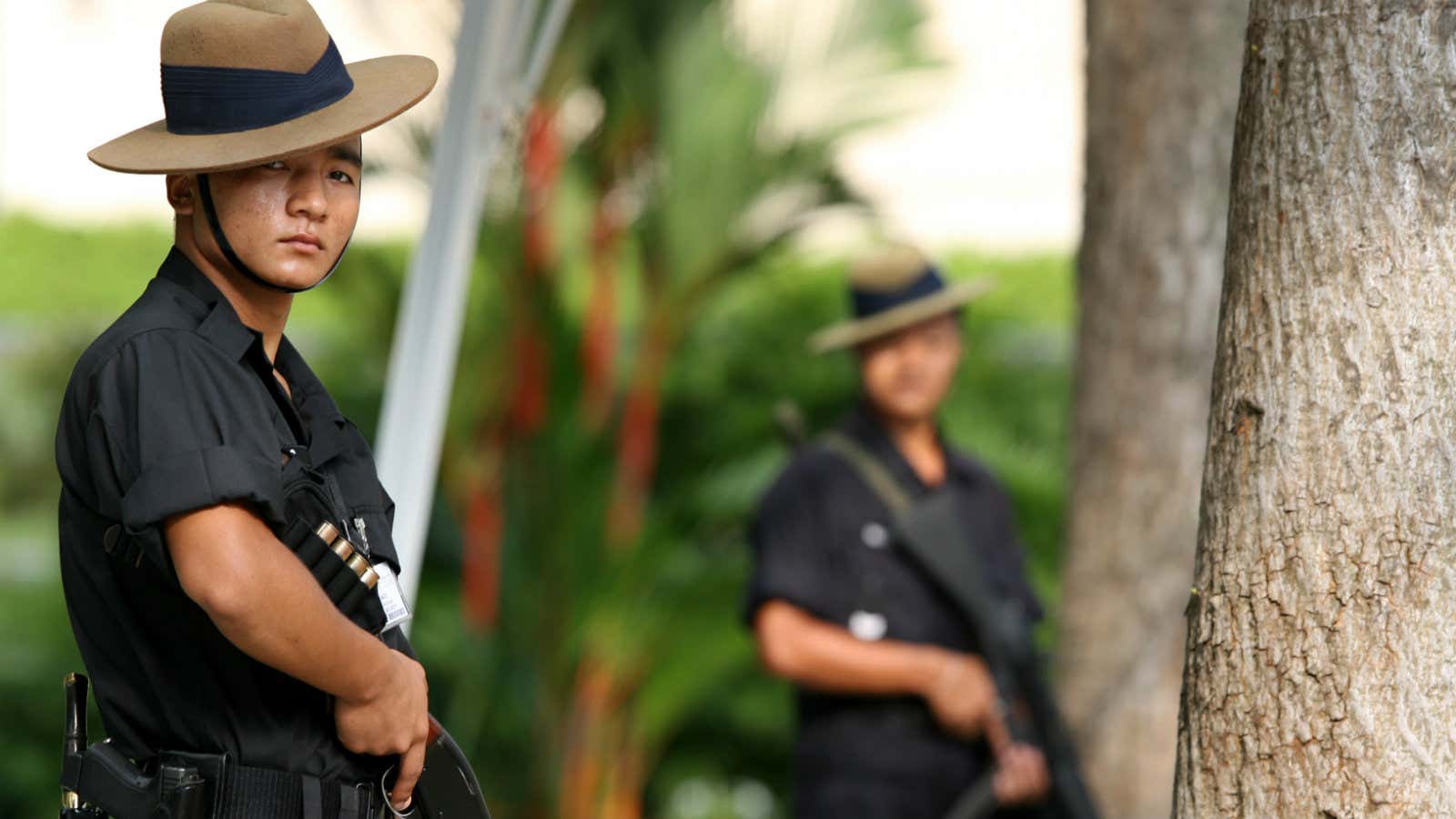Behind the scenes at this week’s historic meeting between US president Donald Trump and North Korea’s Kim Jong Un in Singapore, a formidable paramilitary force will be standing guard.
Armed with assault rifles and traditional 18-inch khukri knives, the Gurkhas are a contingent of highly-skilled Nepali soldiers that have been part of Singapore’s police force since 1949, more than a decade-and-a-half before the nation received independence from British rule. Since then, they’ve played an important role in quelling race riots and guarding the Malaysia-Singapore border, besides protecting VIPs. During the US-North Korea summit, they’ll be guarding the Shangri-La hotel where Trump is staying, besides the St Regis hotel, Kim’s temporary accommodation, and the Capella hotel in Sentosa where the actual summit will take place on June 12.
The story of how the Gurkhas got to Singapore in the first place goes back further in the colonial era to the Anglo-Nepal War fought between the East India Company and the Kingdom of Gorkha from 1814 to 1815. Impressed by the Gurkhas’ fighting skills, the British decided to recruit some of them, and these troops followed in the colonial empire’s footsteps as it expanded across southeast Asia. Over the years, over 200,000 Gurkha soldiers would go on to fight in both the world wars, besides serving in Malaysia, the Falkland Islands, and even Iraq and Afghanistan. Today, outside of Nepal, they’re found in a handful of countries, including the UK, India, and Singapore.
In the latter, the Gurkhas were present for some of the most tumultuous years of the country’s modern history as tensions between various ethnic groups, notably the Chinese and the Malays, erupted into conflicts in the 1950s and 1960s.
Celebrated for their impartiality and loyalty, around 2,000 Gurkha troops serve in Singapore’s police force today. Every year, just 60 are recruited at the ages of 18 or 19 through a fiercely competitive selection process in Nepal that involves intense tests such as racing up steep hills while carrying heavy baskets. Those that qualify move into Mount Vernon, a self-contained cantonment for Gurkha soldiers in Singapore that has its own temple and supermarket, and is closed to the public. Here, they live with their families, and their children go to local schools nearby.
But there’s a catch: The Gurkha soldiers retire at 45, and have to return back home to Nepal with their families after that. As a result, despite their contributions to Singaporean society, they remain “visibly invisible,” always on the periphery, according to Zakaria Zainal, a photographer and writer who has worked to document the community’s often ignored history.
Using personal photographs and stories from past members of Singapore’s Gurkha community, Zainal and fellow Singaporean Chong Zi Liang have created the Singapore Gurkha Photography Museum, a fascinating visual online archive that shows what life is like for the soldiers when they’re not on the job, and how even those long retired feel a close connection to Singapore’s past, present, and future.
